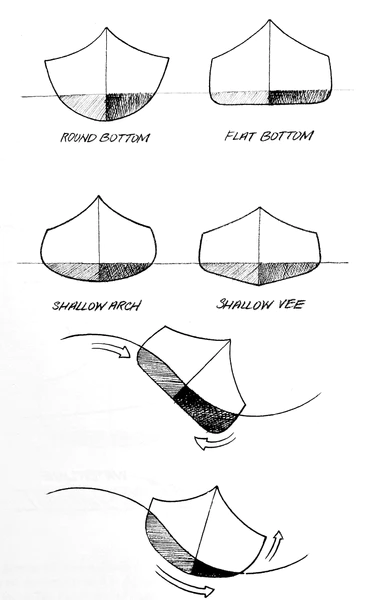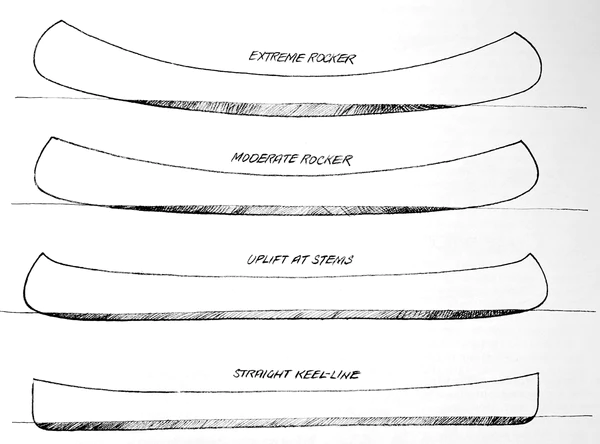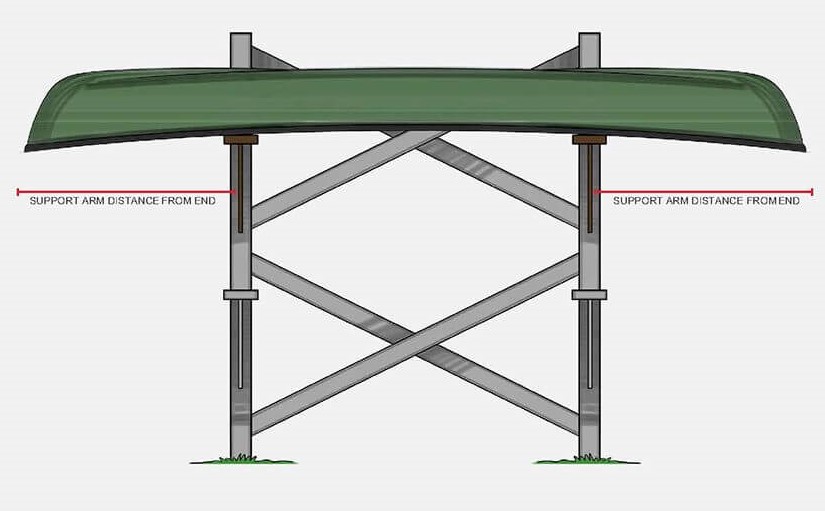Choosing A Canoe or Kayak
Buying a boat can be a daunting experience. There are literally thousands of options. The following information is to help you make a good choice. The information applies as a general guide but also in considering which Valkyrie boats to buy.
Choosing a Canoe – Things to look out for
The perfect boat!?
There is no one perfect canoe. Different shapes and sizes suit different purposes …… which could mean that we buy a boat for each different use and have a big shed to store them in. For most of us this is totally absurd so we need to be able to compromise and develop skills that allow us to adapt the boat(s) we have for our various needs.
Length and beam
With regards beam in both open canoes and in kayaks, the narrower the boat the more likely it is to be fast . . but the less stable it will become.
Open canoes:
In Canada and the USA there has been a tradition of using large open canoes, from 17ft upwards. These bigger boats carry more people and gear but are less manageable both on and off the water. In the UK and Europe we have tended towards open boats around 16ft as standard and in general paddle with two people per boat, which is fine for most boats of this size, and allows for gear, children or dogs as well.
Unless you intend doing large amounts of solo paddling, a boat around 16ft is a good option. A boat of this length is a good size for tandem paddling and is perfectly manageable solo as long as it is a good overall shape.
If you mainly intend to paddle solo, a boat of 14/15ft can be the better bet. A boat of this size will be easier to manage alone, both on and off the water, and can carry two for shorter trips
Sea Kayaks:
Valkyrie sea kayaks are built to fit the customer. To decide on the length we work from the age old general rule of thumb that your boat should be three times your full arm span. This is a tried and tested length for a boat that combines speed and manoeuvrability. (However, If you want we can modify this to produce a boat that fits your intended use.)
This is a good rule of thumb in selecting a sea kayak in general.
Other shape issues

As beginners, most of us tend towards boats that are more stable, and progress to less stable but more responsive boats as our skills develop. This can be crudely compared to having stabilisers on a push bike. None of us would want to be stuck with a bike that had them permanently. With this in mind, if you have recently taken up canoeing/ kayaking, it is not very wise to buy a flat bottomed, straight sided boat…. you will either sell it later to get a better boat, probably losing money in the process, or put up with it and enjoy the paddling less and develop fewer skills. A boat that is a little more tippy feels uncomfortable the first few times in it but soon feels normal; a ‘bath tub’ canoe feels safe the first few times and is then uncomfortable for years. To begin with it may be easier to paddle straight, but in the long run the work needed to turn becomes frustrating.

Rocker is the shape of the canoe from bow to stern. In general the more rocker the boat has the easier it will be to turn . . . but the harder to keep in a straight line.
Images borrowed from ‘Canoecraft’.
An open canoe with a gently rounded hull and with a moderate rocker is a safe bet for most paddling. It is important to be aware that attention to the best shape is not guaranteed by commercial manufacturers and that some plastic models are significantly harder to paddle than others because of their shape and poor positioning of seats and thwarts; this usually, but not always, applies to cheaper ones.
A sea kayaks shape should be dictated by the type of paddling you want to do in the long run. Hard chines and a clear ‘V’ keel as seen in traditional sea kayaks edge very well, and tend to hold a straight line. They also can tend to have an initially unstable feel because they may lean to rest on the chine – but in this position they become stable (secondary stability). In boats without chines initial stability is provided by flatter wider bottoms, and they can have less solid secondary stability, meaning once they are going over they keep going. Rocker on a sea kayak can produce a boat that ‘dances’ beautifully but can be hard to control in more challenging water and in wind.
Hull material – Staying in shape
All Valkyrie boats will keep their shape if stored correctly. The design of each boat is such that the forces involved balance to ensure they won’t distort. In general with plastic hulls the quality or the thickness of the material used dictates how well they maintain their intended shape. Expensive plastic hulls have tougher and lighter materials whilst cheaper ones either bulk up the thickness to maintain shape, or don’t and don’t maintain their shape.

Correct Storage for canoes and kayaks is very important. A general rule of thumb is to store them topside down on a rack with supports roughly 1/3 from either end.
They should, as far a possible, be stored out of direct sunlight and out of the weather.
‘Oil Canning’ is a term often used to describe the way many hulls distort. This is essentially when the hull of the boat bends inwards rather than bulging outwards along the base, usually in the central widest section. This not only looks bad, it also upsets the aqua-dynamics of the boat and makes it slower/ heavier to paddle. Valkyrie wooden canoes and kayaks are more resistant to this problem than plastic boats due to a combination of materials and construction. It can be caused by storing the boat right side up on a flat surface. It an happen extremely quickly with plastic boats on a hot day!
Hull material – Buoyancy
All Valkyrie boats have inherent buoyancy. The wooden boats are all built of light timbers that float even when the canoe is filled with water. Cheaper plastic hulls do not all have a similar construction, so some are not buoyant at all. If they capsize and fill they will sink. Many paddlers also fit buoyancy bags into the ends of their boats to increase the buoyancy which means they float higher in the water if filled. These can be fitted to all Valkyrie boats.
Hull material – durability
It is widely believed that plastic boats are superior to wooden boats in this regard. This is not particularly true. Every time a hull of any type scrapes against a surface harder than itself it is damaged. In the case of plastic boats this leaves curls, scrapes, gouges or dents that can’t be removed. Each one of these causes friction and makes the boat harder to paddle because they both increase the surface area in contact with the water and also act as corrugations that cause turbulence, which increases friction. In the case of serious splits and cracks, if the plastic is in good condition it can in some cases be welded or bonded, but if it is thin or brittle with age it may well be written off.
Valkyrie wooden boats are painted or varnished. These surfaces also scrape and gouge but whenever the time seems appropriate they can be sanded down and paint or varnish reapplied, restoring the look of the boat, and possibly more importantly, the smooth low friction surface. In the case of more serious damage the timbers can be replaced or restored.
Valkyrie Skin-on-Frame boats have a Polyurethane coating that is flexible, and is on a flexible ‘skin surface. This means that impacts that damage other materials do not damage them because the ‘skin’ flexes away from the impact. In the longer term the skin can be removed and another fitted taking the boat back to an as new state. The light weight of these boats means that dragging them across hard surfaces to get too and from the water is not needed!
The set up – Seats, thwarts and all
Open Canoes:
What is in the boat and where it is can be almost as important as the boat itself. Many ‘off the shelf’ open canoes have very little thought put into how they are set up.
Seat positioning is the aspect that is most often flawed. Many boats have two seats that are exactly the same, fitted equidistant from either end. This means the bow paddler has too little foot room and may feel unbalanced, which in turn makes the boat unstable. In other cases, the webbed width of the seat is too narrow, forcing the paddler to sit in the very centre of the boat, which limits the strokes that can be used. Canoes with moulded plastic seats are a particular problem because they force the paddler to stay in the same place and same position, which can become very uncomfortable and seriously limits the paddlers ability to perform most strokes and manoeuvres.
Well positioned seats make paddling much easier and can also allow the boat to be comfortably paddled solo.
A boat under 17ft generally only needs one thwart, usually positioned in the dead centre of the canoe. If there are more it may indicate that the gunnels are weak. More than one thwart can also make it difficult to move around the boat. A nice addition can be that the central thwart is yoke shaped to allow the boat to be carried by one person. A kneeling thwart is sometimes added which allows a solo paddler to be positioned closer to the centre of the boat to improve the boat trim.
Canoes should also have strong grab lines/ handles at both ends, both for carrying and for deep water rescues. They should also have tender lines tied to strong anchor points at both ends. To be useful for a range of canoeing activities, tender lines should be at least 5m long.
Valkyrie open canoes are all set up to ensure the various combination of factors mentioned above are dealt with to produce a well balanced boat with optimum on board space. Specific customer requests are always catered to.
Sea Kayaks:
There is significantly less that can be played with in a sea kayak. The choice of set up essentially a given. Seats can be changed or additional foam put in the adjust sitting positions and foot rest can be adjusted. The key point here is that the boat chosen needs to be either perfect for you or it needs to be possible to make adjustments.
Valkyrie sea kayaks are essentially built to measure so these details are dealt with in the ordering process and building process. This includes an array of issues including length, beam, foot position/ inclusion of adjustable foot rests, height of the back deck, height of the front deck, positioning of deck lines etc.
Avoid the Cheap one
Like anything, if the price seems too good to be true, it probably is. With canoes and kayaks, opting for a cheap boat to begin with is generally a false economy and may well result in putting you off canoeing. There are lots of cheap canoes and kayaks lost and forgotten in sheds and gardens around the country. It is better to bide your time, working out what you want by trying a range of boats and asking lots of questions, before you part with your money!!




